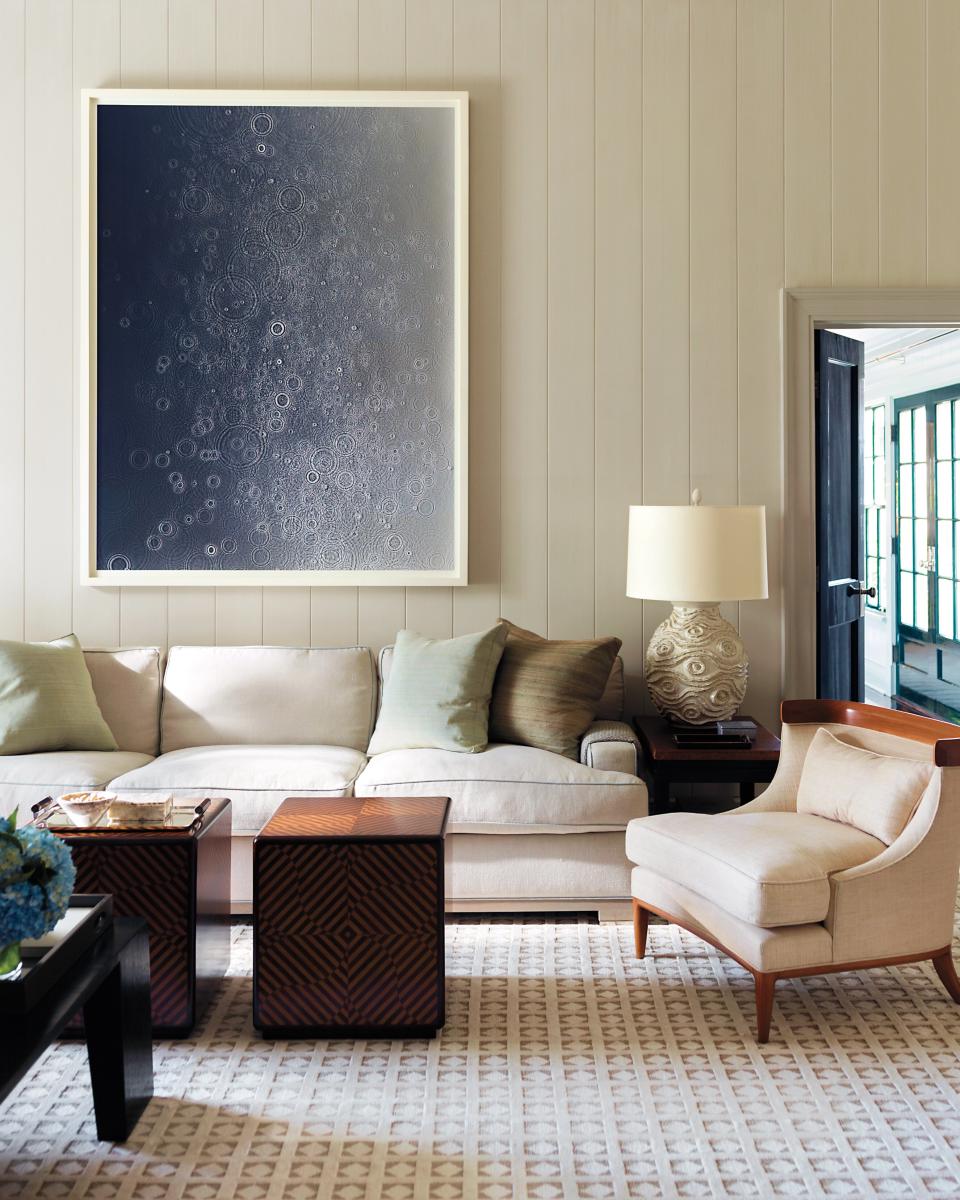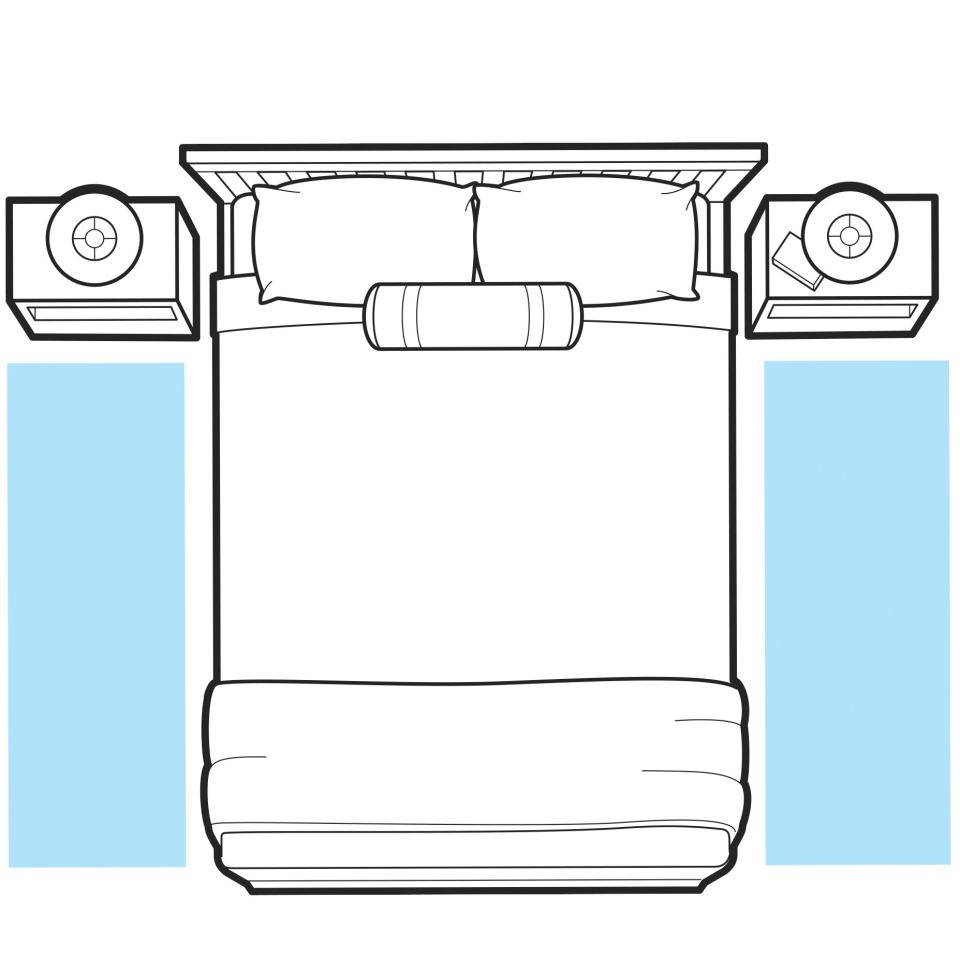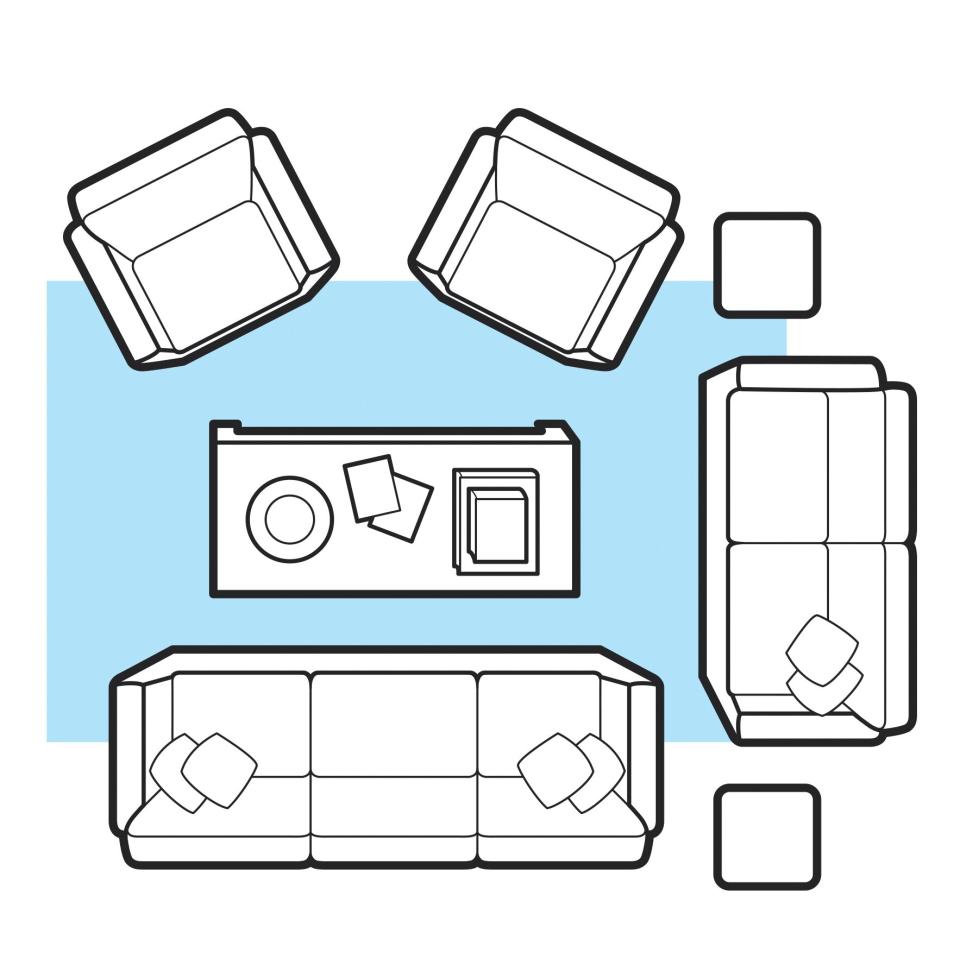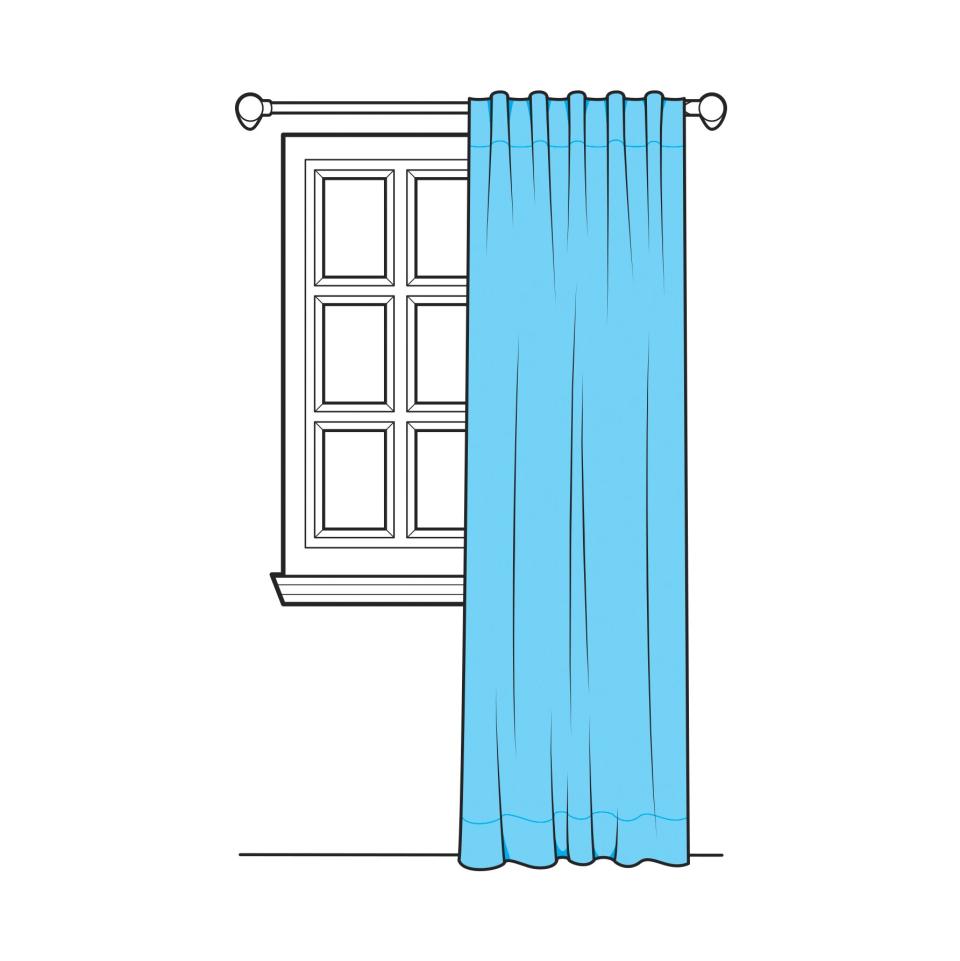4 Decorating Rules That Will Help You Refine and Elevate Any Room
Many homeowners think of interior design in terms of color, shape, pattern, and texture. But creating a cohesive blend of these elements requires an additional level of detail—a precise execution of proportions and proper placement. You may have all the right elements to anchor a living room only to be disappointed when improper execution causes visual imperfections, like putting a small rug in a large, open space.
Interior designers often find themselves addressing these design conundrums again and again: What is the perfect size for a rug in a living room or a dining space? How high should one place their favorite painting? And how low should the chandelier really hang? We've got answers (plus a few visuals) to help you master the details in your own space.
Related: 11 Living Room Decorating Ideas Every Homeowner Should Know

Eric Piasecki/OTTO
Hang Artwork at Eye Level
A common mistake when it comes to art installation is hanging pieces neck-craningly high. Do what museums do: Keep artwork at eye level.
Bare Walls
A good rule of thumb is to hang art so that its midpoint is between 57 and 60 inches from the floor. Aim for the lower end of the range if most members of your household are on the short side; in rooms with ceilings higher than eight feet, artwork can be hung a little higher than 60 inches off the floor. Once you pick the midpoint, stick with it for consistency. For a grouping of works, simply envision the collection as one piece of art.
For art that's taller than 120 inches, forget the midpoint rule; just make sure the bottom edge is about a foot from the floor.
Over Furniture
The only other exception to this rule comes into play when you're framing the art over furniture. When placing art over a sofa or headboard, for instance, it should span roughly two-thirds of the width of the furniture piece. Hang art so that the bottom of the frame is 8 to 10 inches above the furniture piece; the art should be visually connected to it, not floating high above it.
If you're hanging a smaller work over a large unit, try adding sconces or other pieces to fill out the composition.
Related: Beautifully Illuminate Your Living Room with These Lighting Ideas from Interior Designers
Don't Install or Place Lighting Too High
Wall and pendant lights are often installed too high, while lamps are generally placed too low.
Lamp Shades
Kevin Sharkey, the executive vice president and executive director of design for Martha Stewart Living Omnimedia, shares a good rule to heed: The bottom edges of the shades in the living room should be at eye level or just above when you're seated. This allows you and your guests to have an unobstructed view of one another.
Similarly, for a lamp on your bedside table, the bottom of the shade should be at chin level when you're sitting up in bed. "For the sake of visual unity—especially when you're decorating with different lamps in the same room—keep the tops of the lampshades at the same height," says Sharkey.
Pendants and Chandeliers
If you're installing pendant lighting over a kitchen island or bar, or a chandelier over a dining table, hang it so that the bottom hovers 30 to 34 inches from the surface.
Pendants over areas people walk underneath should be hung to allow for a clearance of at least 7 feet. If your ceilings are higher than 8 feet, the pendant can float a few inches higher.
Sconces
There's different rules for sconces, however: This type of light should be placed at or above eye level. If you're installing multiple sconces in a row, space them 8 to 10 feet apart for a seamless glow. If you're hanging them on either side of a bathroom mirror, follow the same rule of thumb for height as discussed, and position them so they're 36 to 40 inches apart.
If you're using them at the sides of your bed, hang each so that they're at eye level when you're sitting in bed. You want the light to be low enough to cast proper reading light but high enough that you don't see the lightbulb.
Related: How to Choose the Right Rug Size for Your Living Room, According to Interior Designers
Choose the Right Size Rug
Measure the room and subtract 24 inches from the length and width to find the proper dimensions of your would-be rug. Or, pick the size based on how you want the rug to frame the furniture. (This will largely depend on the type of room you're working with.)

Bedroom
There are two ways to ensure you'll step onto a warm rug in your bedroom. Position a large rug—8 x 10 feet for a queen bed, 9 x 12 feet for a king—under the bed so that it peeks out 2 to 3 feet on either side and at the foot; the rug should start a few feet from the top (nightstands needn't rest on it). Or, place a runner or 3 x 5 foot rug on each side (see above).

Living Room
If you've placed furniture in your living room against a wall, you have two choices: Pick a rug size that will allow your sofa and armchairs to rest half on the rug and half off of it, or opt for a smaller size so no seating rests on it at all.
"A rug sized to allow your furniture to sit fully or largely on top of it gives the illusion of a bigger room," Sharkey says. For a very large living room where the furniture is placed in the center of the room, select a size that's big enough to have every piece fully resting on it.

Dining Room
You have only one option for placing carpets in dining rooms: Find a size that makes it possible for the table and chairs to completely rest on the rug—even when the chairs are pulled out and in use. An 8 x 10 or 9 x 12 foot iteration usually does the trick.
Related: How to Choose the Right Curtain Length for Your Specific Windows

Measure Rods Before Hanging Curtains
The right curtains can make your windows appear larger. Just remember: The most important measurements aren't the window's, but the rod's, based on its width and its distance to the floor or bottom of the windowsill, depending on the look you're after.
Width
Unless you want café curtains (which hang inside the frame), the rod should extend about 3 to 6 inches past either side of the frame. This allows for optimal light when the curtains are open. To get the right width, multiply the measurement of the rod by 2 to 2.5 for curtains that are drape-y, even when closed.
Height
For height purposes, the rod should be mounted 4 to 6 inches above the window frame to create the illusion of a taller window. Curtains should skim the floor or the sill. Standard lengths are between 63 and 120 inches; err on the side of too long, as you can always have them hemmed.

